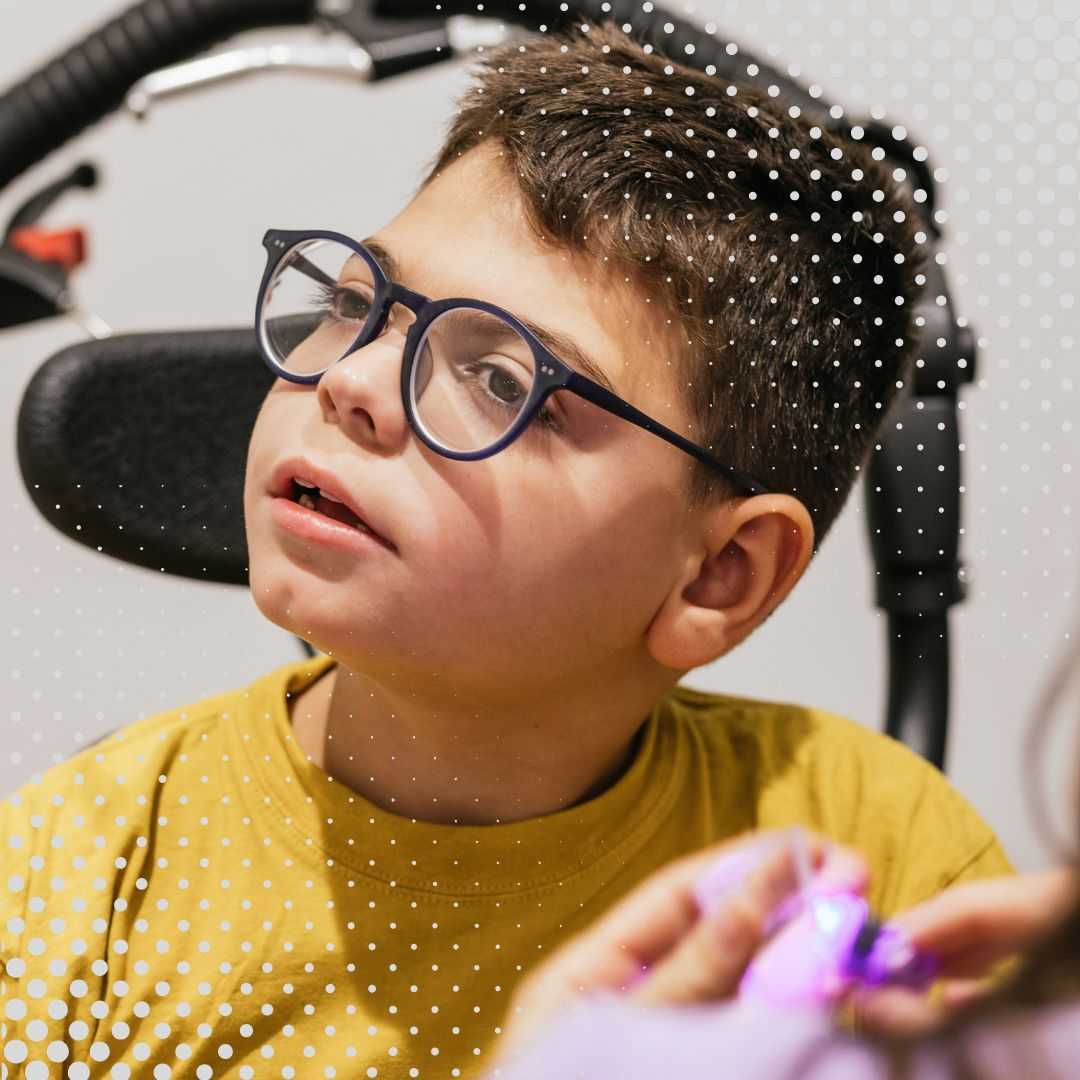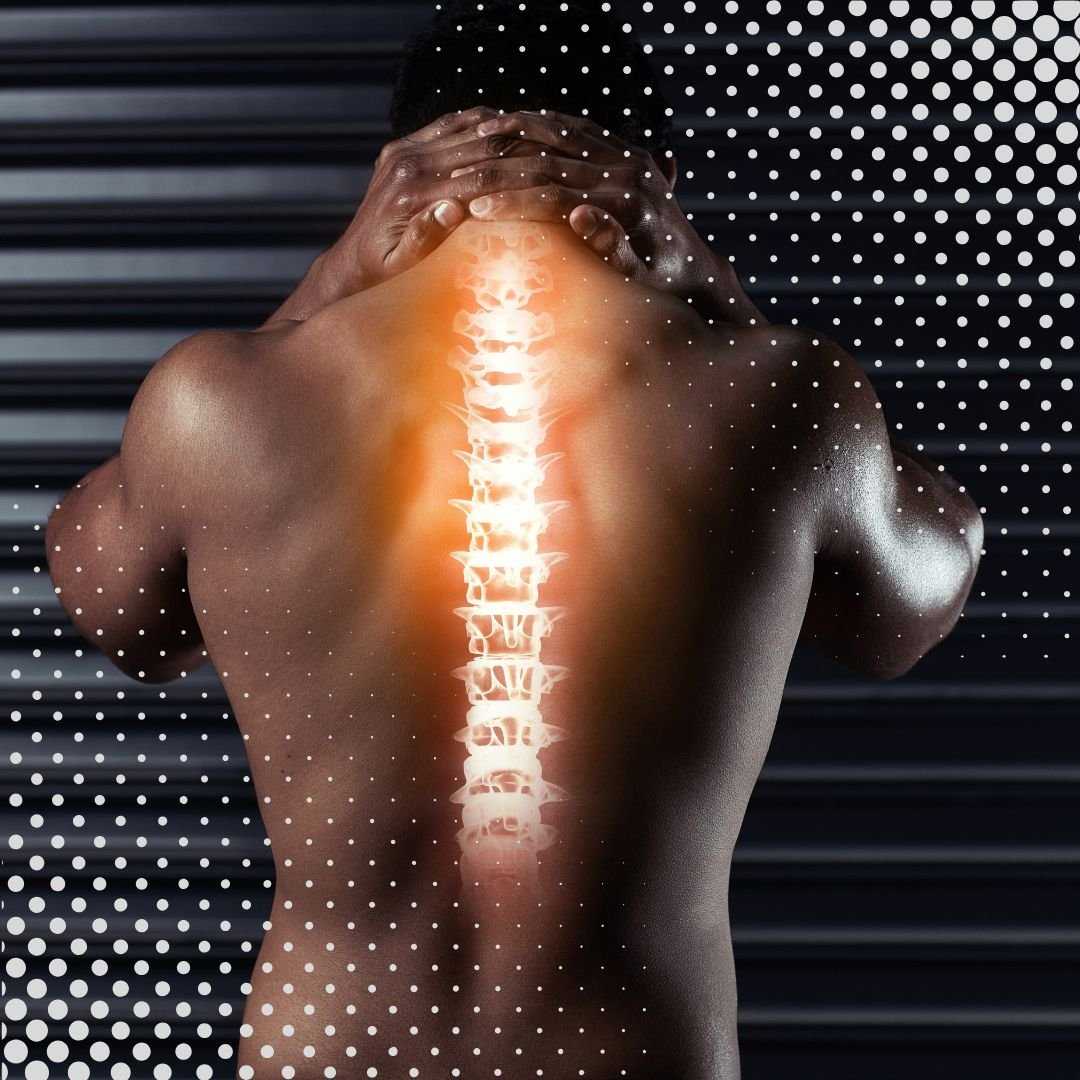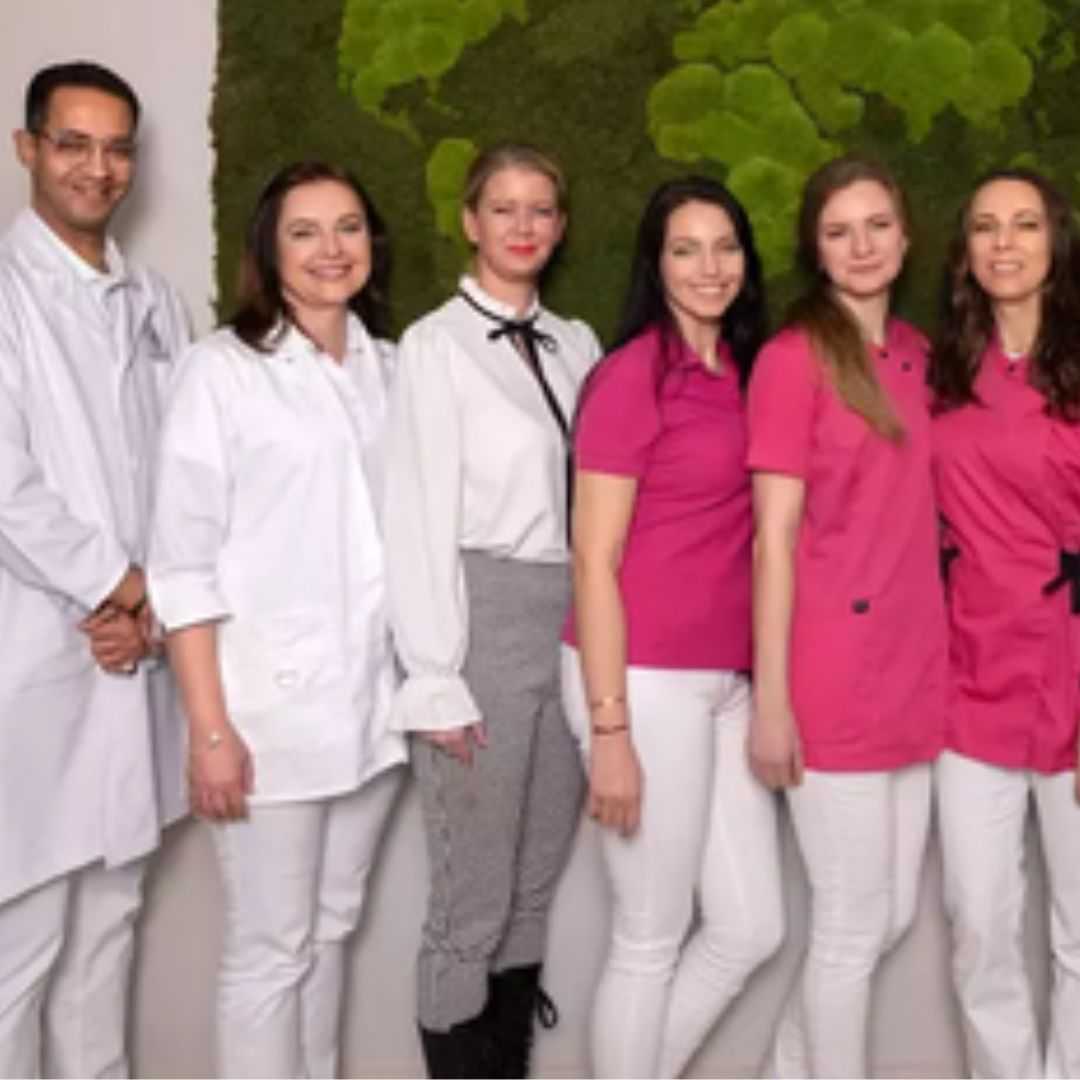Stem Cells for Migraines: Exploring a Breakthrough in Headache Treatment
.png)
Living with migraines can be incredibly challenging, impacting daily life, work, and overall well-being. Millions of people worldwide experience these debilitating headaches, often accompanied by symptoms like throbbing pain, sensitivity to light and sound, and nausea. The search for effective treatments, and ideally a cure, is constant for those who suffer from chronic migraines. In recent years, regenerative medicine, particularly stem cell therapy, has emerged as a topic of great interest, sparking hope for various chronic conditions, including migraines.
So, can stem cells cure migraines? It's a question many are asking, and the short answer is: not yet in a definitive sense. While the concept of using the body's own healing mechanisms to combat a complex neurological condition like a migraine is compelling, stem cell therapy for migraines remains largely experimental. Current research focuses on understanding how these powerful cells might modulate pain pathways, reduce inflammation, or even repair neurological damage that could contribute to migraine attacks. It's a fascinating area of study, offering a glimpse into future possibilities for migraine relief, but it's important to approach it with a clear understanding of its current status as an investigational treatment rather than a widespread, proven cure.
This blog post will explore the current understanding of stem cell therapy in the context of migraines, addressing common questions about its potential, mechanisms, safety, and future outlook. We'll delve into what the science says, what patients might expect, and what limitations still exist, providing an expert perspective on this evolving field of headache treatment.
Can stem cells truly cure migraines?
The idea of a cure for migraines is a beacon of hope for millions, but it's essential to understand that stem cell therapy, in its current state, does not offer a definitive cure. Migraines are complex neurological disorders, and a "cure" would imply a complete and permanent eradication of the condition. While stem cells hold immense promise due to their regenerative and modulatory properties, their application for migraines is still in the early stages of research and clinical trials.
Current studies are primarily focused on evaluating the safety and efficacy of stem cell therapy in reducing the frequency, intensity, and duration of migraine attacks. The goal is often to provide significant symptom relief and improve the quality of life for individuals suffering from chronic migraines who haven't responded well to conventional treatments. Researchers hope that stem cells can address underlying mechanisms contributing to migraines, such as neuroinflammation or impaired neural function, rather than simply masking symptoms. It's a journey from managing a chronic condition to potentially altering its course, but a full cure remains an ambitious long-term goal.
Patients considering stem cell therapy for migraines should maintain realistic expectations. It is not a guaranteed solution, and any treatment outside of approved clinical trials should be viewed with caution and discussed thoroughly with healthcare professionals. The scientific community continues to work towards understanding the full potential of stem cells, but for now, they are part of the ongoing exploration for better migraine treatment options, not a complete remedy.
How do stem cells potentially alleviate migraine symptoms?
The potential mechanisms by which stem cells might help alleviate migraine symptoms are multifaceted and rooted in their unique biological capabilities. Unlike typical cells, stem cells have the ability to differentiate into various cell types and secrete a wide range of biologically active molecules. This makes them powerful tools in regenerative medicine.
Here are some key ways stem cells are thought to work:
- Anti-inflammatory Effects: Migraines are increasingly understood to involve neuroinflammation within the brain and its surrounding structures. Mesenchymal Stem Cells (MSCs), a commonly studied type, are known to secrete anti-inflammatory cytokines that can help reduce this inflammation, potentially calming overactive pain pathways.
- Immunomodulation: Stem cells can regulate the immune system. By modulating immune responses, they might prevent or reduce immune-mediated processes that contribute to migraine pathogenesis, leading to fewer and less severe attacks.
- Neuroprotection and Neuro-regeneration: Some theories suggest that migraines might involve subtle neuronal damage or dysfunction. Stem cells have the capacity to protect existing neurons from damage and potentially aid in the repair or regeneration of neural tissue. They can also release growth factors that support the health and function of brain cells.
- Pain Signal Modulation: Stem cells may directly or indirectly influence pain perception and transmission. By interacting with neurons and glial cells in pain processing centers, they could help to normalize aberrant signaling that characterizes migraine pain.
These mechanisms suggest that stem cell therapy could offer a fundamental approach to migraine relief, targeting the root causes rather than just managing symptoms. However, much research is still needed to fully elucidate these pathways in the context of human migraines.
What types of stem cells are being investigated for migraine treatment?
When discussing stem cell therapy for migraines, it's important to differentiate between the various types of stem cells, as each has distinct properties and applications. For neurological conditions like migraines, research predominantly focuses on certain types due to their therapeutic potential and safety profiles.
The most commonly investigated type of stem cells for conditions like migraines is:
- Mesenchymal Stem Cells (MSCs): These are adult stem cells found in various tissues throughout the body. MSCs are highly favored in research for their strong immunomodulatory, anti-inflammatory, and regenerative capabilities. They are relatively easy to harvest and expand in culture, and their use is generally considered safer than other types of stem cells because they pose a lower risk of tumor formation or immune rejection.
- Sources of MSCs:
- Bone Marrow: A traditional source, involving a minor surgical procedure.
- Adipose (Fat) Tissue: Easily accessible through liposuction, providing a rich source of MSCs.
- Umbilical Cord Tissue: Collected after birth, offering "younger" cells with robust therapeutic potential, often used for allogeneic (donor) treatments.
- Sources of MSCs:
While other types of stem cells, such as hematopoietic stem cells or induced pluripotent stem cells (iPSCs), are used in other areas of medicine, MSCs currently hold the most promise and are the focus of most studies for neurological pain conditions. Their ability to secrete bioactive factors that influence the local microenvironment, reduce inflammation, and modulate immune responses makes them particularly attractive for addressing the complex pathology of migraines.
Is stem cell therapy for migraines safe and effective?
When considering any novel medical intervention, questions about safety and effectiveness are paramount. For stem cell therapy for migraines, the answer is nuanced because it's still largely an experimental field. In controlled, well-designed clinical trials, MSC-based therapies have generally shown a favorable safety profile, especially when using autologous (patient's own) cells or carefully screened allogeneic (donor) cells.
Safety Considerations:
- Side Effects: Most reported side effects are mild and temporary, such as pain or bruising at the injection site, transient fever, or fatigue.
- Infection: As with any injection procedure, there's a small risk of infection.
- Immune Reaction: With allogeneic cells, there's a potential for immune reaction, though MSCs are known for their immune-privileged properties, minimizing this risk.
- Tumor Formation: This is a significant concern with certain types of stem cells (like embryonic stem cells) but is very low with adult MSCs when handled correctly.
Effectiveness:
Regarding effectiveness, initial studies and anecdotal reports have shown promising results, with some patients experiencing a reduction in migraine frequency, severity, and duration. However, these findings are preliminary. For stem cell therapy to be considered effective and approved as a standard migraine treatment, it must undergo rigorous, large-scale, placebo-controlled clinical trials. These trials are crucial to differentiate genuine therapeutic effects from placebo effects and to determine optimal cell types, dosages, and administration routes.
Patients should be wary of clinics offering unproven stem cell treatments outside of regulated research settings, as these may carry significant risks without established benefits. Always seek advice from qualified medical professionals and inquire about participation in legitimate clinical trials if interested in exploring this option for migraine relief.
What is the current status of clinical trials and research for stem cells and migraines?
The field of regenerative medicine is dynamic, and research into stem cell therapy for migraines is actively ongoing. While there isn't a widely available, approved stem cell treatment for migraines, scientists and clinicians globally are dedicated to exploring its potential through various research avenues.
Preclinical Studies:
- Much of the foundational work is happening in laboratories, using animal models of pain and inflammation to understand how stem cells interact with neurological pathways relevant to migraines. These studies help to identify potential mechanisms of action, optimal cell types, and safe delivery methods before moving to human trials.
Clinical Trials:
- Currently, a limited number of human clinical trials are underway. These are typically Phase I or Phase II trials, focusing primarily on:
- Safety: Evaluating any adverse effects or complications associated with stem cell administration.
- Feasibility: Determining if the procedures for harvesting, processing, and delivering stem cells are practical and tolerable.
- Preliminary Efficacy: Gathering initial data on whether stem cell therapy shows any indication of reducing migraine frequency, intensity, or duration, or improving quality of life.
- These trials often involve a small number of participants and aim to establish a foundation for larger, more definitive Phase III trials in the future. Data from ongoing trials are being collected and analyzed, and while some preliminary results show promise, they are not yet conclusive enough to support widespread clinical application.
The scientific community is proceeding with caution, emphasizing the need for robust evidence before stem cell therapy can be considered a standard or curative migraine treatment. Patients interested in this cutting-edge approach should consult with their healthcare providers about legitimate clinical trial opportunities, ensuring they are part of regulated research that adheres to ethical and scientific standards.
What are the potential benefits of considering stem cell therapy for chronic migraines?
For individuals suffering from chronic migraines, who often find conventional treatments insufficient or associated with undesirable side effects, the idea of a novel therapy like stem cell treatment offers significant hope. While not a cure, the potential benefits being explored are compelling:
Reduced Migraine Frequency and Severity:
- The primary goal of stem cell research for migraines is to decrease how often migraines occur and how intense they are when they do. If successful, this could mean fewer days lost to pain and a return to more normal daily functioning.
Decreased Medication Reliance:
- Many chronic migraine sufferers depend heavily on acute and preventive medications, which can come with their own set of side effects and risks. A successful stem cell therapy might reduce the need for these medications, leading to a better long-term health profile and fewer side effects from drugs.
Improved Quality of Life:
- Living with constant pain and unpredictable attacks takes a severe toll on mental and physical health. Any treatment that significantly reduces this burden, even if it doesn't eliminate migraines entirely, could dramatically improve a patient's overall quality of life, allowing for greater participation in social, professional, and personal activities.
Targeting Underlying Mechanisms:
- Unlike some symptomatic treatments, stem cell therapy is believed to work by addressing the underlying biological processes contributing to migraines, such as inflammation or nerve dysfunction. This could lead to more sustained and fundamental relief compared to therapies that only manage acute symptoms.
It's important to reiterate that these are potential benefits observed in preliminary studies or hypothesized based on the known properties of stem cells. For patients with intractable migraines, these possibilities represent a significant step forward in the search for more effective migraine relief.
What are the limitations and ethical considerations surrounding stem cell treatments for migraines?
While the potential of stem cell therapy for migraines is exciting, it's crucial to acknowledge the current limitations and ethical considerations that surround its use. These factors highlight why broad clinical application is not yet a reality.
Limitations:
- Experimental Status: The most significant limitation is that stem cell therapy for migraines is largely experimental. It has not undergone the extensive, large-scale clinical trials required to prove its long-term safety and efficacy, which are necessary for regulatory approval as a standard treatment.
- Lack of Standardized Protocols: There is no universally accepted protocol for using stem cells for migraines. This includes variability in cell types, sources, preparation methods, dosages, and routes of administration, making it difficult to compare results across different studies or clinics.
- Uncertain Long-term Efficacy: Even in cases where short-term improvements are observed, the durability of these effects and the long-term impact of stem cell therapy on migraine progression are largely unknown.
- Accessibility and Cost: Legitimate clinical trials have strict eligibility criteria, limiting access. Commercial clinics offering unproven treatments often charge exorbitant fees, which are typically not covered by insurance, making them inaccessible to many.
Ethical Considerations:
- Patient Exploitation: The hope associated with stem cells can make vulnerable patients susceptible to clinics offering unproven and potentially harmful treatments for considerable financial gain, without scientific evidence or regulatory oversight.
- Misinformation: The complex nature of stem cell research can be easily distorted, leading to patients making uninformed decisions based on exaggerated claims rather than scientific facts.
- Source of Stem Cells: While MSCs from adult tissues (bone marrow, fat) and umbilical cord are generally accepted, the use of embryonic stem cells for research raises different ethical questions for some groups. For migraines, MSCs are the primary focus.
Navigating these limitations and ethical concerns requires a commitment to scientific rigor, patient education, and stringent regulatory oversight to ensure that the development of stem cell therapies proceeds responsibly and ultimately benefits patients safely and effectively for migraine relief.
What is the cost of experimental stem cell therapy for migraines, and is it covered by insurance?
Understanding the financial aspect of any medical treatment is crucial, and for experimental therapies like stem cell therapy for migraines, the costs can be a significant barrier. Since these treatments are not yet approved or considered standard medical practice, they fall outside the realm of typical insurance coverage.
Cost Variability:
The cost of experimental stem cell therapy can vary widely depending on several factors:
- Clinic and Location: Prices can differ greatly between clinics, countries, and regions. Overseas clinics may advertise lower prices, but these often come with additional travel and accommodation costs, and varying regulatory standards.
- Type of Stem Cells: The source and processing of the stem cells (e.g., autologous from the patient's own fat or bone marrow, or allogeneic from donor umbilical cord) can influence the cost.
- Treatment Protocol: The number of infusions or injections, the concentration of cells, and any adjunctive therapies included in the protocol will affect the total price.
- Consultation and Follow-up: Initial consultations, diagnostic work-ups, and post-treatment follow-up care can add to the overall expense.
It is not uncommon for a single course of experimental stem cell therapy for migraines to cost anywhere from $5,000 to over $20,000, and sometimes even more, depending on the factors listed above.
Insurance Coverage:
As a rule, health insurance providers in most countries do not cover experimental stem cell treatments for migraines. Insurance plans typically only cover treatments that are:
- Proven to be safe and effective through extensive clinical trials.
- Approved by regulatory bodies (like the FDA in the US, EMA in Europe).
- Considered medically necessary and part of standard care for a condition.
Since stem cell therapy for migraines does not currently meet these criteria, patients considering such treatments should be prepared to pay entirely out-of-pocket. This financial burden underscores the importance of thoroughly researching any clinic or provider and ensuring they operate ethically and transparently regarding costs and expected outcomes. Patients should prioritize legitimate clinical trials, which often cover treatment costs, over unproven commercial offerings.
What does the future hold for stem cells and migraine relief?
The future of stem cells as a potential approach for migraine relief is an area of intense interest and optimism within the scientific and medical communities. While a definitive cure is not yet on the horizon, the trajectory of research suggests significant advancements could be made in the coming decades, potentially transforming how migraines are managed.
Key Areas of Future Development:
- Refined Mechanisms of Action: Future research will likely lead to a deeper understanding of how stem cells precisely interact with the nervous system and immune system to alleviate migraine symptoms. This clarity could lead to more targeted and effective cell-based therapies.
- Optimized Delivery Methods: Scientists are continuously exploring the safest and most effective ways to deliver stem cells to the areas of the body where they can have the greatest therapeutic impact for migraines, minimizing invasiveness and maximizing efficacy.
- Biomarker Identification: Identifying specific biomarkers that predict which patients are most likely to respond to stem cell therapy could personalize treatment, ensuring that the therapy is offered to those who will benefit most.
- Larger, Definitive Clinical Trials: As early-phase trials conclude, larger, multi-center Phase III clinical trials will be essential. These will provide the robust data needed to prove efficacy and safety, paving the way for potential regulatory approval and wider availability of stem cell treatments for migraines.
- Combination Therapies: It's possible that stem cell therapy might not be a standalone cure but could be combined with existing or emerging migraine treatments to achieve superior outcomes, offering a multi-pronged approach to migraine management.
The journey from experimental treatment to standard care is a long one, but the foundational work being done now suggests that stem cell therapy has the genuine potential to become a valuable tool in the arsenal against chronic and debilitating migraines, offering new hope for long-term migraine relief and improved quality of life.
If you are exploring advanced medical treatments or looking for options to manage chronic conditions, PlacidWay offers a gateway to reputable global healthcare providers. Discover how PlacidWay can connect you with solutions tailored to your health journey.


.png)









Share this listing